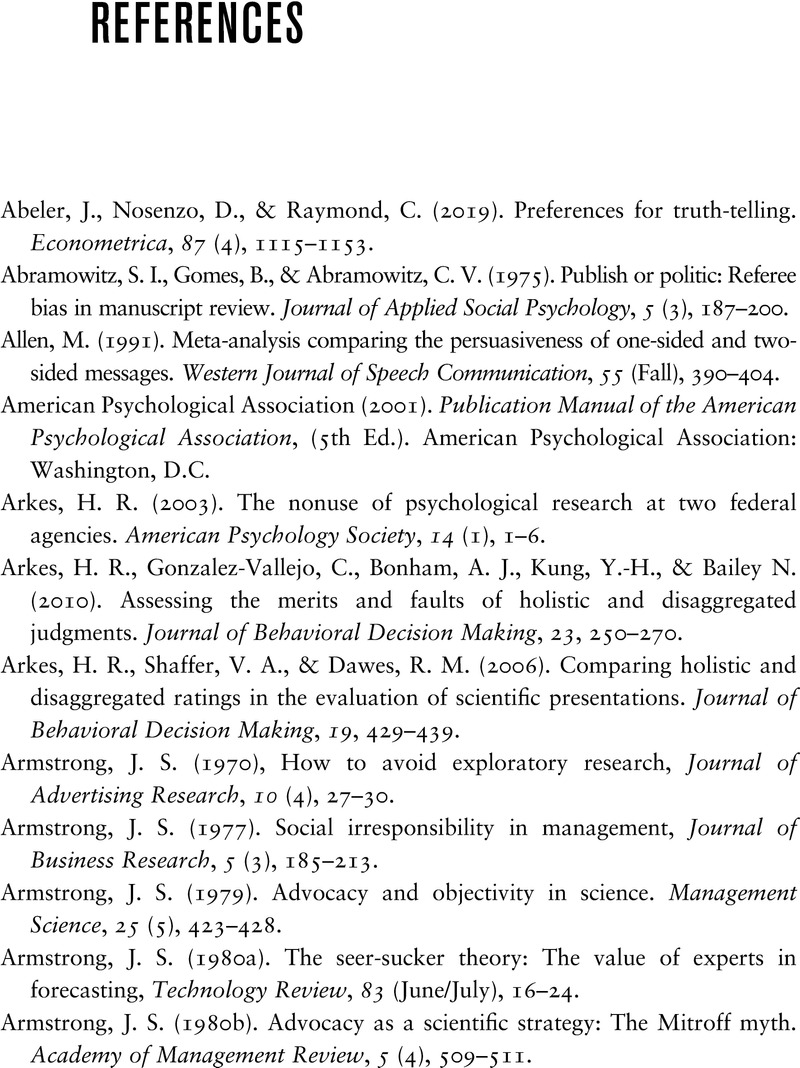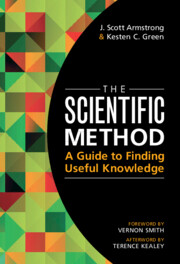Book contents
- The Scientific Method
- The Scientific Method
- Copyright page
- Dedication
- Contents
- Tables and Checklists
- Foreword
- Acknowledgments
- Who is this book for?
- Authors’ Oath for The Scientific Method
- 1 Introduction
- 2 Defining the Scientific Method
- 3 Checklist for the Scientific Method
- 4 Assessing the Quality of Scientific Practice
- 5 Scientific Practice: Problem of Advocacy
- 6 Scientific Practice: Problem of Journal Reviews
- 7 Scientific Practice: Problem of Government Involvement
- 8 What It Takes To Be A Good Scientist
- 9 How Scientists Can Discover Useful Knowledge
- 10 How Scientists Can Disseminate Useful Findings
- 11 How Stakeholders Can Help Science
- 12 Rescuing Science from Advocacy
- Afterword
- References
- Index
- References
References
Published online by Cambridge University Press: 23 June 2022
- The Scientific Method
- The Scientific Method
- Copyright page
- Dedication
- Contents
- Tables and Checklists
- Foreword
- Acknowledgments
- Who is this book for?
- Authors’ Oath for The Scientific Method
- 1 Introduction
- 2 Defining the Scientific Method
- 3 Checklist for the Scientific Method
- 4 Assessing the Quality of Scientific Practice
- 5 Scientific Practice: Problem of Advocacy
- 6 Scientific Practice: Problem of Journal Reviews
- 7 Scientific Practice: Problem of Government Involvement
- 8 What It Takes To Be A Good Scientist
- 9 How Scientists Can Discover Useful Knowledge
- 10 How Scientists Can Disseminate Useful Findings
- 11 How Stakeholders Can Help Science
- 12 Rescuing Science from Advocacy
- Afterword
- References
- Index
- References
Summary

Information
- Type
- Chapter
- Information
- The Scientific MethodA Guide to Finding Useful Knowledge, pp. 176 - 200Publisher: Cambridge University PressPrint publication year: 2022
